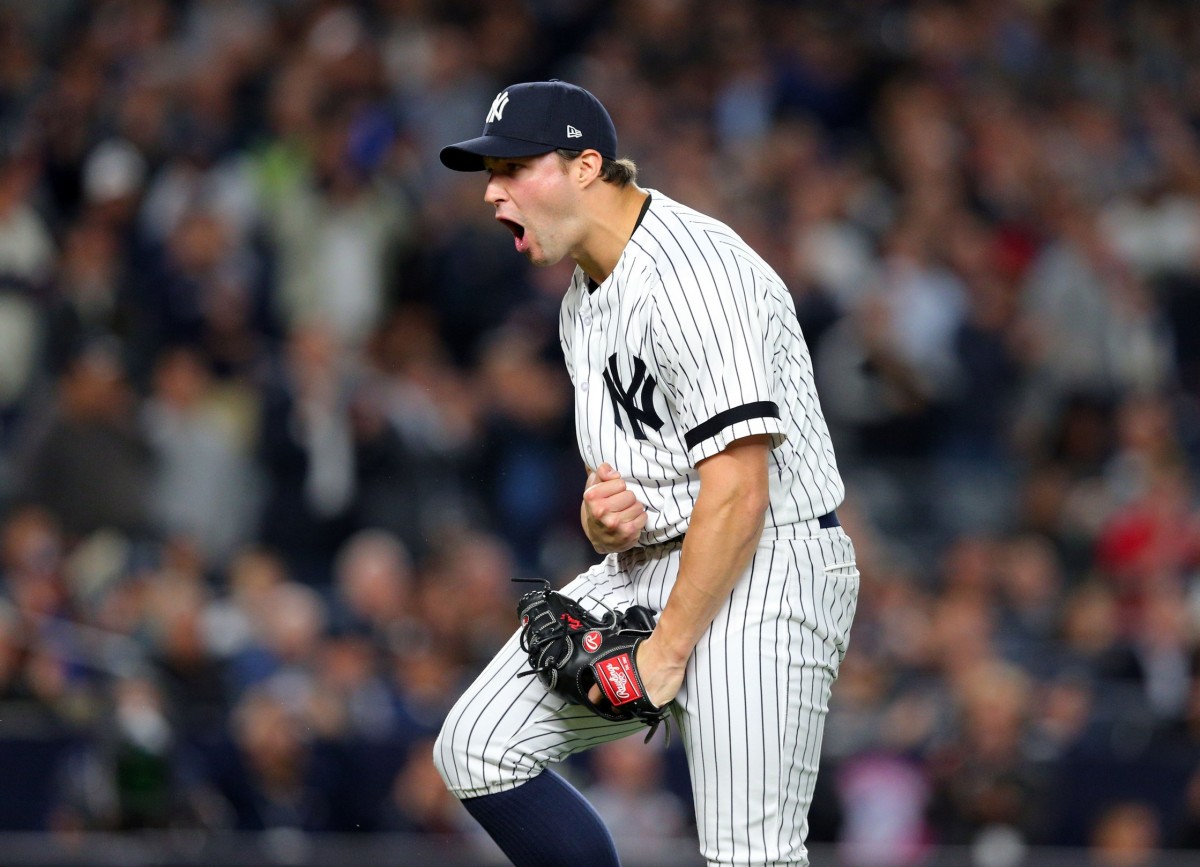The Yankees are in a tricky situation. They’ve just entered the start of their contention window, and now is the time to start making big moves. Brian Cashman accelerated the timeline with his deadline deals in July, and the offseason is an even better time to make improvements because of the larger number of avenues available.
However, they’re in a tricky situation because they don’t want to raid their farm system and strip the outlook for the future. Trading for Sonny Gray and the White Sox haul already put a dent there. Free agency doesn’t necessarily work, either, because the Yankees are supposedly trying to get under the $197 million luxury tax for next season, especially so they can go hog-wild during the crazy 2018-19 offseason while resetting the luxury tax progressive penalties.
The Yankees have a unique solution sitting right in front of them, however — their surplus of relief talent. They currently have six names — Aroldis Chapman, Dellin Betances, David Robertson, Tommy Kahnle, Chad Green, and Adam Warren — that would profile as an upgrade over one of many teams’ top two relievers.
Trading one of the relievers from that list that comes with cheap team control is ideal for two reasons:
1) As the famous front office adage goes, always be trading relievers. Relievers are so volatile that you shouldn’t count on them being viable MLB players even two years from now. Having a controllable young reliever for four more seasons, for example, doesn’t equate in relative value to a young position player with four more seasons of team control. Because a reliever’s value is so unpredictable, it almost always makes sense to trade him at what you perceive to be peak value.
2) It will help bring back young assets that can be packaged for, say, an upgrade in the Yankees’ starting rotation. This seems to be the only avenue that will minimize depletion of the farm system while also not signing a free agent starting pitcher to a nine-figure contract.
Now, why exactly would the Yankees want to do this? Wouldn’t it just be a lateral move by trading from a position of strength to address a position of weakness?
Well, actually…no, not really. In the playoffs, the value of teams’ best relievers exponentially increases, while the front end of the bullpen becomes significantly less valuable. To illustrate the point, take a look at the Dodgers from this postseason, who had a clear-cut relief ace (Kenley Jansen) and a clear-cut second-in-command (Brandon Morrow). During the regular season, Jansen pitched the whole year without injury and recorded 68.1 innings while appearing in 65 of the Dodgers’ 162 games (40.1 percent of Dodgers’ total games). During the postseason, Jansen appeared in 13 of the Dodgers’ 15 games (86.7 percent, 16.2 innings). When the games mattered the most, Jansen’s value was at its highest. To extrapolate that regular season value, Jansen would have to appear in 140 regular season games (LOL), throwing 180 innings.
Morrow appeared in an even more ridiculous 14 games (93.3 percent, 13.2 innings). If you’re curious about that regular season extrapolation, it’s 151 appearances and 147.2 innings pitched.
The point is that, with the extra days of rest and the importance of playoff games, the highest-leverage relievers tend to throw a ton. A common formula is “starting pitcher for six innings, two relief aces combine for the last three”. That leaves less room for innings for the less-talented relievers, who pitch in low-leverage situations, often blowouts, when they do come in during the playoffs.
So as deep and historically talented as the current Yankees’ relief corps may be, it’s unnecessary. Every additional talented reliever helps, but the marginal value of each is diminishing.
On the other end of the deal, there are countless teams (read: all of them) that could use an extra lockdown reliever. Even for those willing to overpay and dip their toes into the free agent pool, there aren’t a ton of appealing options like there were last offseason. Outside of Wade Davis, and there’s only one Wade Davis to go around, teams will either have to bank on a short track record of dominance (ex. Anthony Swarzak), injury concerns (Greg Holland), or both (Brandon Morrow).
That’s where the Yankees come in.
Photo Credit: Brad Penner / USA TODAY Sports
